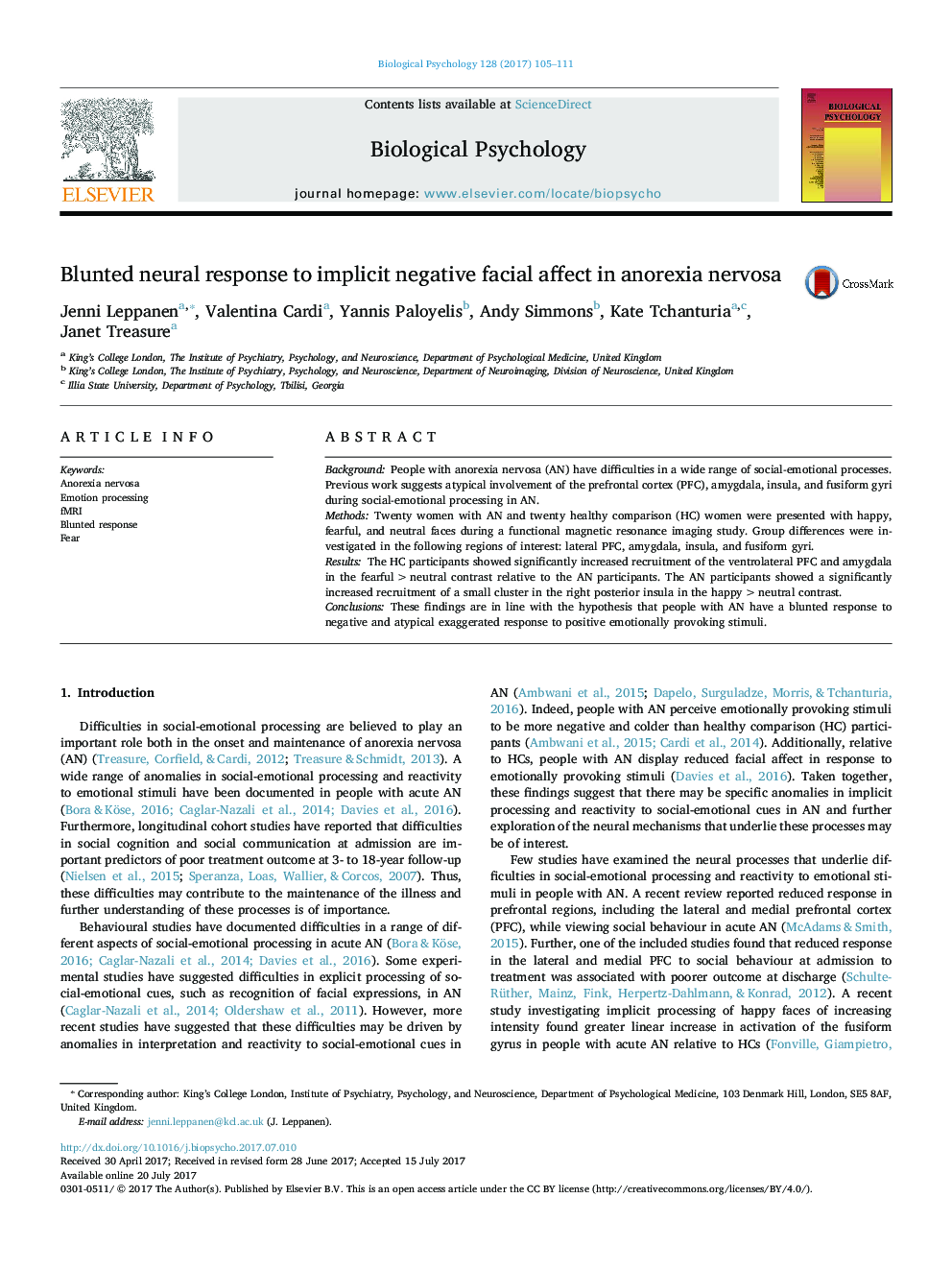| Article ID | Journal | Published Year | Pages | File Type |
|---|---|---|---|---|
| 5040386 | Biological Psychology | 2017 | 7 Pages |
â¢FMRI study of BOLD response to positive and negative facial affect in AN.â¢Blunted prefrontal and amygdala BOLD response to negative facial effect in AN.â¢Atypical increase in insula BOLD response to positive facial affect in AN.
BackgroundPeople with anorexia nervosa (AN) have difficulties in a wide range of social-emotional processes. Previous work suggests atypical involvement of the prefrontal cortex (PFC), amygdala, insula, and fusiform gyri during social-emotional processing in AN.MethodsTwenty women with AN and twenty healthy comparison (HC) women were presented with happy, fearful, and neutral faces during a functional magnetic resonance imaging study. Group differences were investigated in the following regions of interest: lateral PFC, amygdala, insula, and fusiform gyri.ResultsThe HC participants showed significantly increased recruitment of the ventrolateral PFC and amygdala in the fearful > neutral contrast relative to the AN participants. The AN participants showed a significantly increased recruitment of a small cluster in the right posterior insula in the happy > neutral contrast.ConclusionsThese findings are in line with the hypothesis that people with AN have a blunted response to negative and atypical exaggerated response to positive emotionally provoking stimuli.
